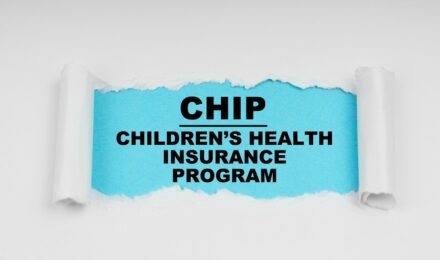Contents
Medicare Part D stands as a crucial component of the United States healthcare system, providing essential prescription drug coverage to millions of Americans. As prescription drug costs continue to rise, understanding this vital program becomes increasingly important for beneficiaries and their families. This comprehensive guide explores how Medicare Part D works, its benefits, costs, and important considerations for enrollment.
What is Medicare Part D?
Medicare Part D, introduced through the Medicare Modernization Act of 2003 and implemented in 2006, represents the federal government’s prescription drug benefit program for Medicare beneficiaries. Unlike Original Medicare (Parts A and B), Part D plans are offered by private insurance companies approved by Medicare, providing beneficiaries with options to choose coverage that best suits their needs [^1].
The program was created to address a significant gap in Medicare coverage, as the original Medicare program did not include prescription drug benefits. This addition has helped millions of seniors and disabled individuals afford their necessary medications, with over 49 million Americans enrolled in Part D plans as of 2024.
Key Features and Benefits
The program offers substantial benefits to help Medicare beneficiaries manage their prescription drug costs. Every Medicare Part D plan must provide at least a standard level of coverage set by Medicare. In 2024, key features include:
Standard Coverage Features
- Comprehensive coverage for both brand-name and generic prescription drugs
- Access to an extensive network of pharmacies
- Protection against future prescription drug costs
- Catastrophic coverage when out-of-pocket spending reaches $7,400 [^2]
Additional Plan Benefits
- Many plans offer enhanced coverage beyond Medicare’s standard requirements
- Some plans include preferred pharmacy networks with lower copayments
- Mail-order pharmacy services for convenient medication delivery
- Medication therapy management programs for eligible beneficiaries
- Coverage for a wide range of commonly prescribed medications
How Medicare Part D Works
Enrollment Periods
Understanding enrollment periods is crucial for avoiding coverage gaps and penalties:
Initial Enrollment Period (IEP)
- Begins three months before the month you turn 65
- Includes your birth month
- Extends three months after your birth month
- Special rules apply for those eligible due to disability
Annual Election Period (AEP)
- Runs from October 15 to December 7 each year
- Allows changing plans for the following year
- Opportunity to review and compare current coverage
Special Enrollment Periods (SEPs)
- Available under certain qualifying circumstances
- Includes moving out of plan’s service area
- Loss of other creditable coverage
- Qualifying for Extra Help
- Moving into or out of an institution [^3]
Coverage Phases
Medicare Part D plans operate with distinct coverage phases throughout the year, each with different cost-sharing requirements:
- Deductible Phase
- Beneficiaries pay the full cost of drugs until reaching their plan’s deductible
- Standard deductible in 2024 is $545, though some plans offer lower deductibles
- Some plans exclude certain tiers of drugs from the deductible
- Initial Coverage Phase
- Begins after meeting the deductible
- Plan shares cost through copayments or coinsurance
- Continues until reaching the initial coverage limit
- Different cost-sharing tiers for different types of drugs
- Coverage Gap (Donut Hole)
- Begins when combined drug costs reach $4,660
- Beneficiaries pay 25% for both brand-name and generic drugs
- Manufacturers provide a 70% discount on brand-name drugs
- Continues until reaching catastrophic coverage threshold
- Catastrophic Coverage
- Begins after spending $7,400 out-of-pocket
- Significantly reduced costs for remainder of year
- Pay only 5% of drug costs or small copayment
- No annual limit on catastrophic coverage
Costs and Financial Assistance
Premium Costs
Monthly premiums vary significantly based on several factors:
- Geographic location
- Chosen plan’s coverage level
- Income level (IRMAA adjustments)
- Plan performance ratings
- Additional enhanced benefits
In 2024, beneficiaries with higher incomes may pay an income-related monthly adjustment amount (IRMAA) in addition to their plan premium. These adjustments are based on modified adjusted gross income from two years prior [^4].
Extra Help Program
Medicare’s “Extra Help” program provides vital assistance to beneficiaries with limited income and resources. This program offers comprehensive support:
Full Extra Help Benefits
- Full premium assistance up to benchmark amount
- No deductible
- Minimal copayments for prescriptions
- No coverage gap
- Total value up to $5,300 annually
Partial Extra Help Benefits
- Sliding scale premium assistance
- Reduced deductible
- Lower coinsurance rates
- Reduced coverage gap costs
Qualification is based on income and resource limits that are adjusted annually. In 2024, individuals can qualify with income up to $20,625 for individuals or $27,900 for married couples [^5].
Choosing the Right Plan
Factors to Consider
Selecting the appropriate Medicare Part D plan requires careful evaluation of several key factors:
Current Medications
- Review complete list of prescriptions
- Check each plan’s formulary
- Compare tier placements
- Verify coverage restrictions
Pharmacy Networks
- Identify preferred pharmacy locations
- Compare standard vs. preferred pharmacy costs
- Evaluate mail-order options
- Consider pharmacy convenience
Cost Considerations
- Monthly premium amounts
- Annual deductible levels
- Copayment/coinsurance structures
- Coverage gap protection
- Total anticipated annual costs
Plan Finder Tool
Medicare.gov’s Plan Finder tool serves as an essential resource for comparing available plans:
- Allows personalized drug list input
- Compares total annual costs
- Shows pharmacy options
- Displays plan ratings
- Updates information regularly [^6]
Recent Changes and Improvements
The Inflation Reduction Act of 2022 introduced significant improvements to Medicare Part D, with implementation occurring over several years:
Immediate Benefits
- Monthly insulin copays capped at $35
- Free recommended adult vaccines
- Manufacturer price negotiation program
- Inflation rebate requirements
Future Improvements
- Annual out-of-pocket spending cap of $2,000 starting in 2025
- Elimination of 5% coinsurance in catastrophic phase
- Expanded low-income subsidies
- Enhanced premium stabilization [^7]
Tips for Maximizing Benefits
To optimize Medicare Part D coverage, beneficiaries should:
Regular Review and Updates
- Evaluate plan changes annually
- Update medication lists regularly
- Compare plans during Annual Election Period
- Monitor formulary changes
Cost Management Strategies
- Consider generic alternatives when available
- Utilize preferred pharmacies
- Explore mail-order services
- Take advantage of medication therapy management programs
- Track out-of-pocket spending
Documentation Practices
- Maintain detailed medication records
- Keep coverage determination letters
- Save explanation of benefits statements
- Document appeals and exceptions
Avoiding Late Enrollment Penalties
Late enrollment penalties can significantly impact long-term costs:
Penalty Calculation
- 1% of national base beneficiary premium
- Multiplied by number of uncovered months
- Permanent addition to monthly premium
Avoiding Penalties
- Enroll during Initial Enrollment Period
- Maintain creditable coverage
- Document other drug coverage
- Understand Special Enrollment Period rights [^8]
Looking Ahead
Medicare Part D continues to evolve with legislative changes and improvements in prescription drug coverage. Future developments include:
- Implementation of additional Inflation Reduction Act provisions
- Enhanced benefit design requirements
- Expanded medication therapy management programs
- Increased focus on biosimilar medications
- Integration with other Medicare benefits
Conclusion
Medicare Part D provides essential prescription drug coverage for millions of Americans, offering protection against high medication costs and access to necessary prescriptions. Understanding the program’s features, costs, and enrollment requirements helps beneficiaries make informed decisions about their healthcare coverage. Regular review of plan options and staying informed about program changes ensures continued access to necessary medications at the most affordable costs.
References
[^1] Centers for Medicare & Medicaid Services. (2024). Medicare Prescription Drug Benefit Manual.
https://www.cms.gov/files/document/medicare-prescription-drug-benefit-manual
[^2] Medicare Drug Coverage. (2024). Costs in the Coverage Gap.
https://www.medicare.gov/drug-coverage-part-d/costs-for-medicare-drug-coverage/costs-in-the-coverage-gap
[^3] Medicare Enrollment Periods. (2024). When to Sign Up for Medicare.
https://www.medicare.gov/basics/get-started-with-medicare/sign-up/when-can-i-sign-up-for-medicare
[^4] Medicare Costs. (2024). Part D Income-Related Monthly Adjustment Amount.
https://www.medicare.gov/drug-coverage-part-d/costs-for-medicare-drug-coverage/monthly-premium-for-drug-plans
[^5] Extra Help Program. (2024). Medicare Extra Help with Prescription Drug Costs.
https://www.ssa.gov/benefits/medicare/prescriptionhelp.html
[^6] Medicare Plan Finder. (2024). Find & Compare Medicare Drug Plans.
https://www.medicare.gov/plan-compare/#/questions
[^7] CMS Newsroom. (2024). Medicare and the Inflation Reduction Act.
https://www.cms.gov/medicare/inflation-reduction-act-and-medicare
[^8] Medicare Part D Penalties. (2024). Part D Late Enrollment Penalty.
https://www.medicare.gov/basics/costs/medicare-costs/part-d-penalties
Contents
Medicare Part D stands as a crucial component of the United States healthcare system, providing essential prescription drug coverage to millions of Americans. As prescription drug costs continue to rise, understanding this vital program becomes increasingly important for beneficiaries and their families. This comprehensive guide explores how Medicare Part D works, its benefits, costs, and important considerations for enrollment.
What is Medicare Part D?
Medicare Part D, introduced through the Medicare Modernization Act of 2003 and implemented in 2006, represents the federal government’s prescription drug benefit program for Medicare beneficiaries. Unlike Original Medicare (Parts A and B), Part D plans are offered by private insurance companies approved by Medicare, providing beneficiaries with options to choose coverage that best suits their needs [^1].
The program was created to address a significant gap in Medicare coverage, as the original Medicare program did not include prescription drug benefits. This addition has helped millions of seniors and disabled individuals afford their necessary medications, with over 49 million Americans enrolled in Part D plans as of 2024.
Key Features and Benefits
The program offers substantial benefits to help Medicare beneficiaries manage their prescription drug costs. Every Medicare Part D plan must provide at least a standard level of coverage set by Medicare. In 2024, key features include:
Standard Coverage Features
- Comprehensive coverage for both brand-name and generic prescription drugs
- Access to an extensive network of pharmacies
- Protection against future prescription drug costs
- Catastrophic coverage when out-of-pocket spending reaches $7,400 [^2]
Additional Plan Benefits
- Many plans offer enhanced coverage beyond Medicare’s standard requirements
- Some plans include preferred pharmacy networks with lower copayments
- Mail-order pharmacy services for convenient medication delivery
- Medication therapy management programs for eligible beneficiaries
- Coverage for a wide range of commonly prescribed medications
How Medicare Part D Works
Enrollment Periods
Understanding enrollment periods is crucial for avoiding coverage gaps and penalties:
Initial Enrollment Period (IEP)
- Begins three months before the month you turn 65
- Includes your birth month
- Extends three months after your birth month
- Special rules apply for those eligible due to disability
Annual Election Period (AEP)
- Runs from October 15 to December 7 each year
- Allows changing plans for the following year
- Opportunity to review and compare current coverage
Special Enrollment Periods (SEPs)
- Available under certain qualifying circumstances
- Includes moving out of plan’s service area
- Loss of other creditable coverage
- Qualifying for Extra Help
- Moving into or out of an institution [^3]
Coverage Phases
Medicare Part D plans operate with distinct coverage phases throughout the year, each with different cost-sharing requirements:
- Deductible Phase
- Beneficiaries pay the full cost of drugs until reaching their plan’s deductible
- Standard deductible in 2024 is $545, though some plans offer lower deductibles
- Some plans exclude certain tiers of drugs from the deductible
- Initial Coverage Phase
- Begins after meeting the deductible
- Plan shares cost through copayments or coinsurance
- Continues until reaching the initial coverage limit
- Different cost-sharing tiers for different types of drugs
- Coverage Gap (Donut Hole)
- Begins when combined drug costs reach $4,660
- Beneficiaries pay 25% for both brand-name and generic drugs
- Manufacturers provide a 70% discount on brand-name drugs
- Continues until reaching catastrophic coverage threshold
- Catastrophic Coverage
- Begins after spending $7,400 out-of-pocket
- Significantly reduced costs for remainder of year
- Pay only 5% of drug costs or small copayment
- No annual limit on catastrophic coverage
Costs and Financial Assistance
Premium Costs
Monthly premiums vary significantly based on several factors:
- Geographic location
- Chosen plan’s coverage level
- Income level (IRMAA adjustments)
- Plan performance ratings
- Additional enhanced benefits
In 2024, beneficiaries with higher incomes may pay an income-related monthly adjustment amount (IRMAA) in addition to their plan premium. These adjustments are based on modified adjusted gross income from two years prior [^4].
Extra Help Program
Medicare’s “Extra Help” program provides vital assistance to beneficiaries with limited income and resources. This program offers comprehensive support:
Full Extra Help Benefits
- Full premium assistance up to benchmark amount
- No deductible
- Minimal copayments for prescriptions
- No coverage gap
- Total value up to $5,300 annually
Partial Extra Help Benefits
- Sliding scale premium assistance
- Reduced deductible
- Lower coinsurance rates
- Reduced coverage gap costs
Qualification is based on income and resource limits that are adjusted annually. In 2024, individuals can qualify with income up to $20,625 for individuals or $27,900 for married couples [^5].
Choosing the Right Plan
Factors to Consider
Selecting the appropriate Medicare Part D plan requires careful evaluation of several key factors:
Current Medications
- Review complete list of prescriptions
- Check each plan’s formulary
- Compare tier placements
- Verify coverage restrictions
Pharmacy Networks
- Identify preferred pharmacy locations
- Compare standard vs. preferred pharmacy costs
- Evaluate mail-order options
- Consider pharmacy convenience
Cost Considerations
- Monthly premium amounts
- Annual deductible levels
- Copayment/coinsurance structures
- Coverage gap protection
- Total anticipated annual costs
Plan Finder Tool
Medicare.gov’s Plan Finder tool serves as an essential resource for comparing available plans:
- Allows personalized drug list input
- Compares total annual costs
- Shows pharmacy options
- Displays plan ratings
- Updates information regularly [^6]
Recent Changes and Improvements
The Inflation Reduction Act of 2022 introduced significant improvements to Medicare Part D, with implementation occurring over several years:
Immediate Benefits
- Monthly insulin copays capped at $35
- Free recommended adult vaccines
- Manufacturer price negotiation program
- Inflation rebate requirements
Future Improvements
- Annual out-of-pocket spending cap of $2,000 starting in 2025
- Elimination of 5% coinsurance in catastrophic phase
- Expanded low-income subsidies
- Enhanced premium stabilization [^7]
Tips for Maximizing Benefits
To optimize Medicare Part D coverage, beneficiaries should:
Regular Review and Updates
- Evaluate plan changes annually
- Update medication lists regularly
- Compare plans during Annual Election Period
- Monitor formulary changes
Cost Management Strategies
- Consider generic alternatives when available
- Utilize preferred pharmacies
- Explore mail-order services
- Take advantage of medication therapy management programs
- Track out-of-pocket spending
Documentation Practices
- Maintain detailed medication records
- Keep coverage determination letters
- Save explanation of benefits statements
- Document appeals and exceptions
Avoiding Late Enrollment Penalties
Late enrollment penalties can significantly impact long-term costs:
Penalty Calculation
- 1% of national base beneficiary premium
- Multiplied by number of uncovered months
- Permanent addition to monthly premium
Avoiding Penalties
- Enroll during Initial Enrollment Period
- Maintain creditable coverage
- Document other drug coverage
- Understand Special Enrollment Period rights [^8]
Looking Ahead
Medicare Part D continues to evolve with legislative changes and improvements in prescription drug coverage. Future developments include:
- Implementation of additional Inflation Reduction Act provisions
- Enhanced benefit design requirements
- Expanded medication therapy management programs
- Increased focus on biosimilar medications
- Integration with other Medicare benefits
Conclusion
Medicare Part D provides essential prescription drug coverage for millions of Americans, offering protection against high medication costs and access to necessary prescriptions. Understanding the program’s features, costs, and enrollment requirements helps beneficiaries make informed decisions about their healthcare coverage. Regular review of plan options and staying informed about program changes ensures continued access to necessary medications at the most affordable costs.
References
[^1] Centers for Medicare & Medicaid Services. (2024). Medicare Prescription Drug Benefit Manual.
https://www.cms.gov/files/document/medicare-prescription-drug-benefit-manual
[^2] Medicare Drug Coverage. (2024). Costs in the Coverage Gap.
https://www.medicare.gov/drug-coverage-part-d/costs-for-medicare-drug-coverage/costs-in-the-coverage-gap
[^3] Medicare Enrollment Periods. (2024). When to Sign Up for Medicare.
https://www.medicare.gov/basics/get-started-with-medicare/sign-up/when-can-i-sign-up-for-medicare
[^4] Medicare Costs. (2024). Part D Income-Related Monthly Adjustment Amount.
https://www.medicare.gov/drug-coverage-part-d/costs-for-medicare-drug-coverage/monthly-premium-for-drug-plans
[^5] Extra Help Program. (2024). Medicare Extra Help with Prescription Drug Costs.
https://www.ssa.gov/benefits/medicare/prescriptionhelp.html
[^6] Medicare Plan Finder. (2024). Find & Compare Medicare Drug Plans.
https://www.medicare.gov/plan-compare/#/questions
[^7] CMS Newsroom. (2024). Medicare and the Inflation Reduction Act.
https://www.cms.gov/medicare/inflation-reduction-act-and-medicare
[^8] Medicare Part D Penalties. (2024). Part D Late Enrollment Penalty.
https://www.medicare.gov/basics/costs/medicare-costs/part-d-penalties






